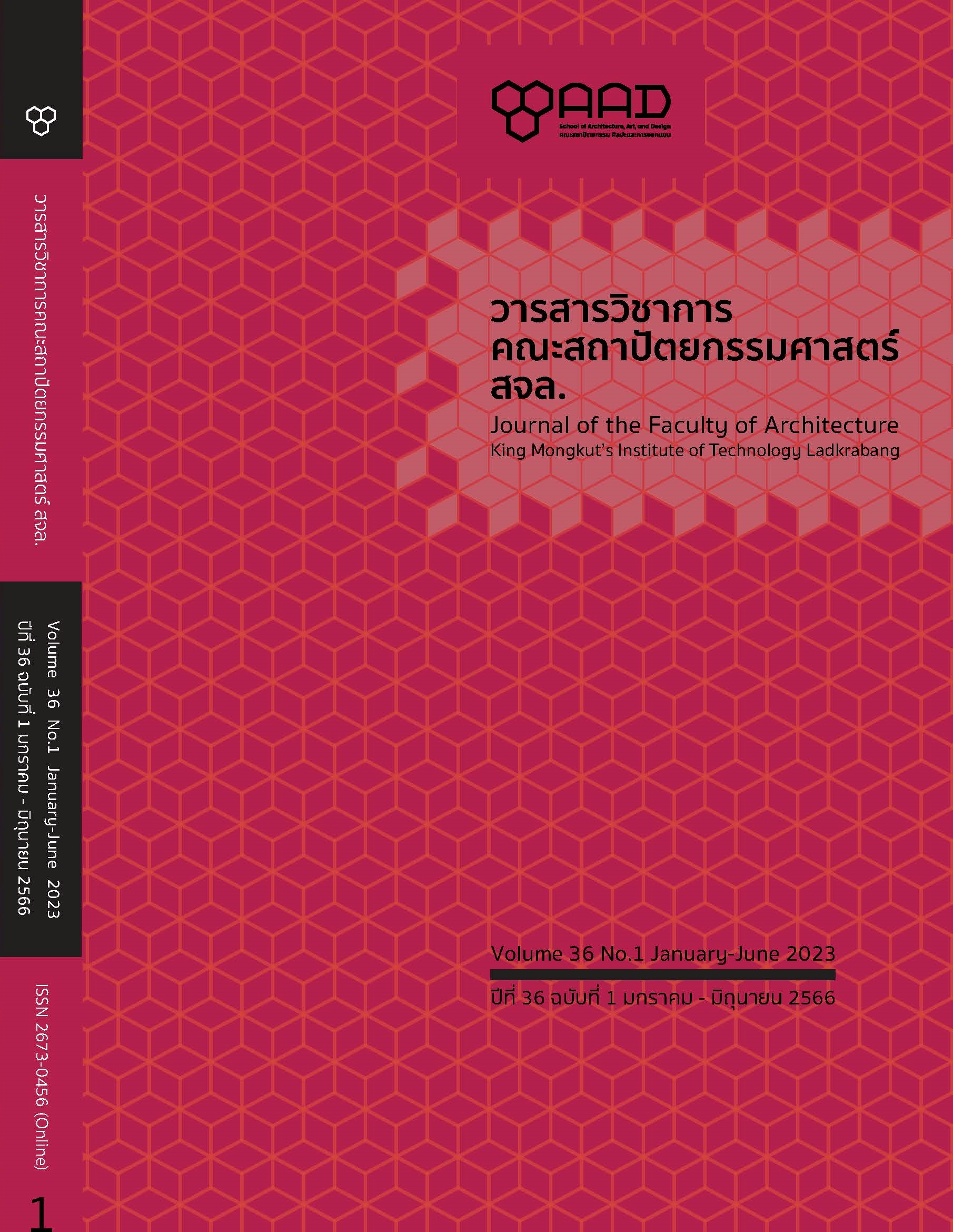Songkhla Old Town Cultural Guide Map: The Making Process
Main Article Content
Abstract
Songkhla Old Town Cultural Guide Map is the transformation of word-based architectural research results into physical forms and data representations. So that both those who are interested and the general public can continue to use it in any way. There are two pages on the map: the front map showing the layout of the entire old town area. and the location is specified eight case study buildings which is a representative of the interesting tenement buildings and originated from the classification of physical forms into four types are Traditional Chinese Buildings, Commercial Chinese Buildings, Sino-European Buildings and Contemporary Buildings, selected to be presented on the map, two of each type, each showing details of architectural elements that express individual identity with explanation. And the map on the back is a landscape line showing the location of the building that has five types of cultural activities, namely eating and drinking, temporary accommodation, faith, social affairs and traditional residence.
In addition, the mapping process also answered the research question using a mixed research method, namely have in-depth interviews together with the field surveys for surveying and collecting case studies used in these maps and the preparation of 200 questionnaires to assess satisfaction with the use of maps. From all 3 research questions, it was found that 1. Able to present research data through mapping and related media should be explained in a format that is easy to understand quickly. 2. From in-depth interviews and inquiries, it was found that the stakeholders said that cultural maps in the old town of Songkhla were necessary and should be available. Because it will increase understanding and make the value of conservation and development. 3. Locals and tourists able to participate in the process of mapping by the researcher creating a prototype map for easy use in interviews, asking for opinions and evaluating through questionnaires. If villagers and tourists can participate in the selection of case studies through building classification from the beginning. The mapping process will be a truly participatory work process.
Article Details

This work is licensed under a Creative Commons Attribution-NonCommercial-NoDerivatives 4.0 International License.
This work is licensed under a Creative Commons Attribution-NonCommercial-ShareAlike 4.0 International License.
Copyright Transfer Statement
The copyright of this article is transferred to Journal of The Faculty of Architecture King Mongkut's Institute of Technology Ladkrabang with effect if and when the article is accepted for publication. The copyright transfer covers the exclusive right to reproduce and distribute the article, including reprints, translations, photographic reproductions, electronic form (offline, online) or any other reproductions of similar nature.
The author warrants that this contribution is original and that he/she has full power to make this grant. The author signs for and accepts responsibility for releasing this material on behalf of any and all co-authors.
References
ณัฐนีภรณ์ น้อยเสงี่ยม. (2559). การเปลี่ยนแปลงภูมิสัณฐานเมือง และแนวทางการอนุรักษ์เมืองประวัติศาสตร์สงขลา. วารสารปาริชาต มหาวิทยาลัยทักษิณ. 29(2), 169-192.
ดวงใจ นันทวงศ์. (2563). การพัฒนาแนวทางการประกอบการเพื่อสังคมเพื่อการอนุรักษ์เมืองเก่าสงขลา. สาระศาสตร์. 2563(1), 1-13.
พาฝัน นิลสวัสดิ์ ดูฮาเมลน์. (2563). การพัฒนาศักยภาพมรดกทางประวัติศาสตร์ของเมืองเก่าสงขลาเพื่อเพิ่มมูลค่าในรูปแบบของการท่องเที่ยวเมืองเก่า. วารสารวิทยาลัยสงฆ์ นครลำปาง. 9 (2), 52-64.
สุภาวดี เชื้อพราหมณ์. (2546). ตึกแถว ผลผลิตทางกายภาพและวัฒนธรรมในชุมชนเมืองเก่า จังหวัดสงขลา. (วิทยานิพนธ์สถาปัตยกรรมศาสตรมหาบัณฑิต สาขาวิชาสถาปัตยกรรม, มหาวิทยาลัยศิลปากร).
มหาวิทยาลัยเทคโนโลยีราชมงคลศรีวิชัย และสำนักงานทรัพยากรธรรมชาติและสิ่งแวดล้อมจังหวัดสงขลา. (2560). โครงการจัดทำแผนแม่บทและผังแม่บทการอนุรักษ์และพัฒนาบริเวณเมืองเก่าสงขลา. สงขลา: มหาวิทยาลัยเทคโนโลยีราชมงคลศรีวิชัย.
มหาวิทยาลัยเทคโนโลยีราชมงคลศรีวิชัย และองค์การบริหารส่วนจังหวัดสงขลา. (2563). โครงการจัดทำแผนแม่บทการบริหารจัดการโครงการปรับปรุงแหล่งโบราณสถานและสถานที่สำคัญทางประวัติศาสตร์ (สงขลาสู่เมืองมรดกโลก). สงขลา: มหาวิทยาลัยเทคโนโลยีราชมงคลศรีวิชัย.
Chakcharoen, Y. (2016). The Suitable Model of Accommodation for Tourism in Songkhla Old Town. (Thesis for Master of Business Administration (Hotel and Tourism Management, International Program International College, Silpakorn University).
Suwannachart, J. (2553). Songkhla Cultural Landscape. Research Journal of Rajamangala University of Technology Srivijaya. 2(1), 63-80.


